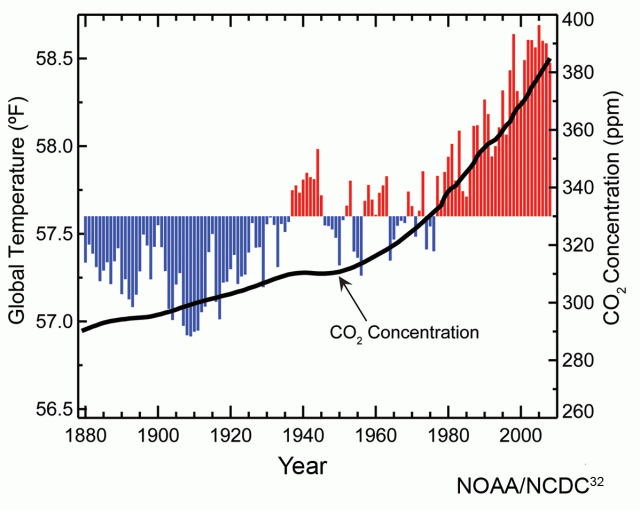By Mushfik Khan
Climate change. I’m sure that most people reading this have heard those words before, but are we as aware or concerned of the causes and impacts of climate change as we should be? I mean… when was the last time you saw it trending on Twitter?
Firstly, it is important to understand what ‘climate change’ actually means as a concept.
Earth’s climate has been changing for thousands of years and has remained relatively stable whilst doing so- as can be seen from the graph below. Therefore, it is of no surprise that it will continue to change. The thing which concerns scientists around the world is the rapid rate at which the earth’s climate has been changing in recent years.

For centuries, the level of carbon dioxide in the atmosphere did not surpass the mark labelled with an arrow on the graph. However since the Industrial Revolution, human activity through the burning of fossil fuels has been increasing the level of greenhouse gases, in particular carbon dioxide in the atmosphere at an unstable rate.
Studies by NASA have shown that the increasing amounts of greenhouse gases being released into the atmosphere are ramping up the natural greenhouse effect, causing more heat to become trapped and therefore raising the planet’s surface temperature. It is stated that the average temperature of the Earth’s surface has increased by about 1.1 degrees Celsius since the late 19th century, this may not seem significant but if it continues to increase any further, it will have devastating consequences for all life forms on earth.
We are already witnessing the impacts of climate change around the globe. In recent days the southern states of the USA have been hit with 3 category 5 hurricanes which have become more destructive as a result of climate change. Furthermore, large parts of East Africa are suffering extreme droughts, many areas around the world have experienced record breaking heatwaves and extremes in precipitation patterns.

Those are only a few of the effects of climate change. It is clear to see that we can no longer ignore the realness of climate change, it is time for nations to come together and figure out solutions and ways to prevent the impacts of climate change from growing worse. This was what the ‘Paris Climate Agreement’ aimed to do, to bring all of the world’s nations into a single agreement to tackle climate change and one of the key elements of the agreement was to keep global temperatures well below 2.0 degrees Celsius. However, despite the agreement being dubbed as ‘historic’, the President of the United States has refused to partake in the agreement, he has already voiced his controversial opinions on Twitter, claiming that climate change does not exist and that it is all a hoax. Without the United States as party to the agreement there is no chance of it succeeding. As the world’s wealthiest nation, it’s funds are vital to support developing nations to leap straight from fossil fuels to renewable sources of energy and to set an example to other nations about the seriousness of the issue.
Despite the international stage looking murky on the topic of climate change, I can safely say from the research I have done that Wales as a nation has certainly been trying.
So far, the Welsh Government has passed two acts which both recognise the central importance of climate change. The first one is the ‘Well-being of Future Generations Act 2015’. This act requires public bodies across Wales to think in a more long term and sustainable way by setting seven ‘well-being goals’ which the public bodies must take into consideration when making decisions. Furthermore, ‘The Environment (Wales) Act 2016’ emphasises sustainable management of natural resources and requires public authorities to maintain and enhance biodiversity, it also puts an obligation on welsh ministers to meet targets for greenhouse gas emissions from Wales by calling for a reduction of at least 80% of emissions by 2050.
Clearly there is a lot more work that needs to be done globally regarding climate change but time is running out and we as the future generation need to try our best to do as much as we can to ensure that the planet that we call home now is not an apocalyptic scene in the future.
For more information on what you can do to save our planet, check out the links below:
https://www.greenpeace.org.uk/



